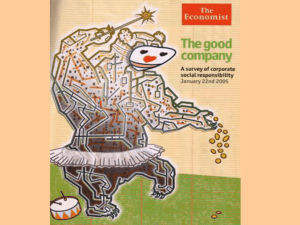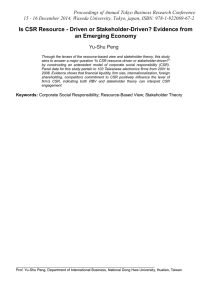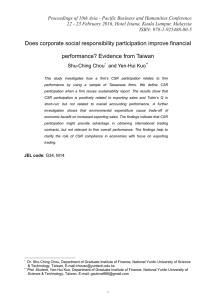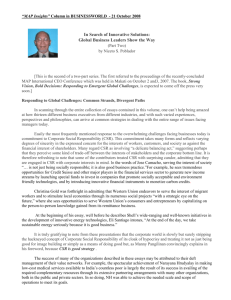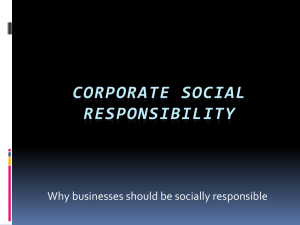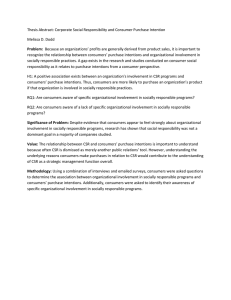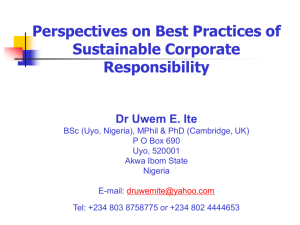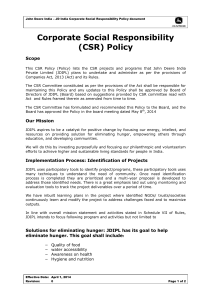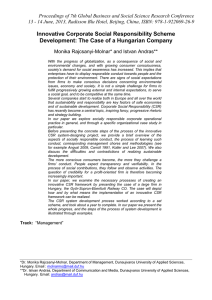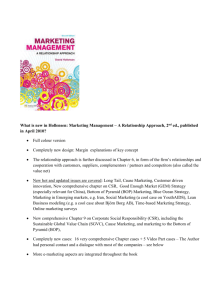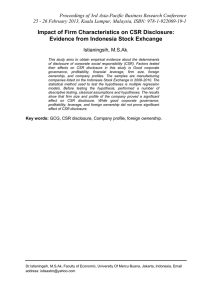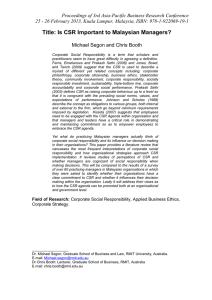Introduction to CSR
advertisement
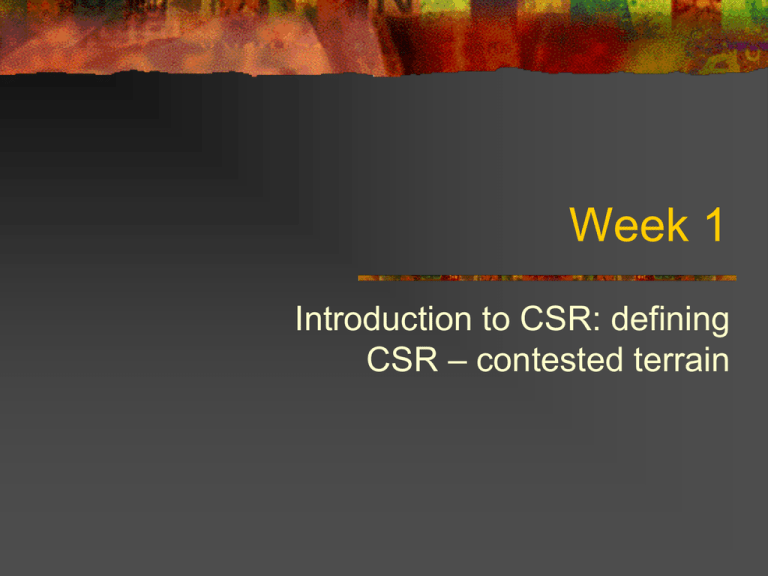
Week 1 Introduction to CSR: defining CSR – contested terrain General Motors - Malibu Fire risk from fuel tank explosion Risk known since engineer’s report in 1973 500 fatalities per annum Cost of legal claim = $2.40 per car Cost of rectifying problem = $8.59 per car 1993 claim awarded $1.2billion punative damages “People of the same trade seldom meet together even for merriment and diversion, but the conversation ends in a conspiracy against the public or some contrivance to raise prices.” Adam Smith – The Wealth of Nations “whether or not business should undertake CSR, and the forms that responsibility should take, depends upon the economic perspective of the firm that is adopted”. Moir (2001) CSR “analyses economic, legal, moral, social and physical aspects of environment”. Barnard (1938) “there is one and only one social responsibility of business – to use its resources and engage in activities designed to increase its profits so long as it stays within the rules of the game, which is to say, engages in open and free competition without deception or fraud”. Friedman (1970) “business encompasses the economic, legal, ethical and discretionary expectations that society has of organization at a given point in time”. Carroll (1979) “business turns a social problem into economic opportunity and economic benefit, into productive capacity, into human competence, into well-paid jobs, and into wealth”. Drucker (1984) “in the modern commercial area, companies and their managers are subjected to well publicised pressure to play an increasingly active role in [the welfare of] society.” Balabanis, Phillips and Lyall (1998) “there is a positive relationship between disclosure level and CSR. That is, firms that engage in socially responsive activities provide more informative and extensive disclosures than do firms that are less focused on advancing social goals.” Gelb and Strawser (2001) CSR “is a concept whereby companies integrate social and environmental concerns in their business operations and in their interaction with their stakeholders on a voluntary basis” European Commission (2002) There is a sound business case for social responsibility Department of Trade & Industry (DTI) "....every large corporation should be thought of as a social enterprise; that is an entity whose existence and decisions can be justified insofar as they serve public or social purposes" Dahl (1972) Socially responsible behaviour leads to increased economic performance Crowther (2002) “a certain amount of rhetoric may be inevitable in the area of social responsibility. Managers may even believe that making statements about social responsibility insulates the firm from the necessity of taking socially responsible action.” Robertson and Nicholson (1996) What has caused the interest in CSR? Social context Political context Economic context The case of Enron Collapsed 2002 Audit failure – Andersons collapsed Accounting irregularities Fraud Employees and shareholders loss Bhopal, India 1984 Worst pollution episode in history Union Carbide chemical plant 100’s dead, 1000’s injured Pollution of water etc still present No compensation paid to date The case of BCCI Bank of Credit & Commerce International closed down in July 1991 1.4 million depositors Losses > $10billion Fraud Audit failure Oil pollution Torrey Canyon, 1969 Amoco Cadiz, 1993 The Prestige, 2003 Alaska Siberia Nigeria Why did it go wrong? Rights & responsibilities Risk & rewards Corporate power Accounting ‘If the confidence of the public in the integrity of accountants’ reports is shaken, their value is gone. To preserve the integrity of his reports, the accountant must insist upon absolute independence of judgment and action. The necessity of preserving this position of independence indicates certain standards of conduct.’ Arthur Andersen, 1932


